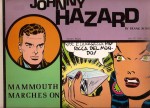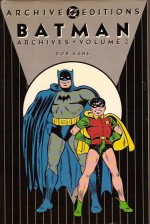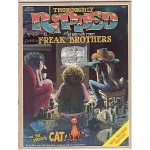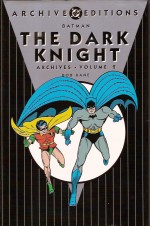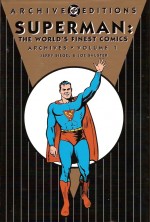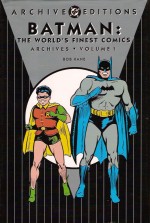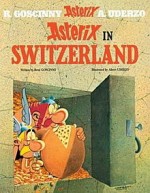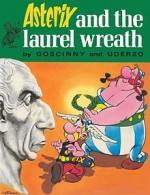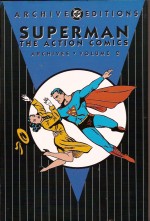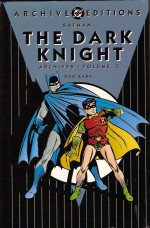
By Bob Kane, Bill Finger, Jerry Robinson & George Roussos & various (DC Comics)
ISBN: 1-56389-615-X
With this third magnificent compilation of the epochal early Batman, the Dark Knight entered his fourth year of publication and the expanded creative team truly hit their stride, providing spectacular escapist thrills and chills for readers on the home front and even in the far-and-widely deployed armed services as 1942 brought America fully into the war and deadly danger never seemed closer…
This full-colour deluxe hardback tome (collecting the classic contents of Batman #9-12 from February/March to August/September 1942) opens with an expansive introduction from modern Bat-scribe Mike W. Barr, and also saw the introduction of an extensive contents section and detailed biographies for those talented folk who crafted these Golden Age greats.
The Dynamic Duo were popular sensations whose heroic exploits not only thrilled millions of eager readers but also provided artistic inspiration for a generation of comics creators and with America wholeheartedly embracing World War II by this period and the stories – especially the patriotic covers – went all-out to capture the imagination, comfort the down-hearted and bolster the nation’s morale.
Batman #9 is regarded as one of the greatest single issues of the Golden Age and is still a cracking parcel of joy today. Due to the unique “off-sale†dating system of the USA the issue hit the newsstands in time for Christmas 1941, with all the stories written by Bill Finger and illustrated by Bob Kane, Jerry Robinson & George Roussos. Moreover the issue sports possibly the most reproduced Batman cover ever; crafted by the brilliant Jack Burnley.
Within those pages the action began with ‘The Four Fates!’: a dark and moving human interest drama featuring a quartet of fore-doomed mobsters, after which our heroes ship out in ‘The White Whale!’, a mind-bending maritime crime saga loosely based on the classic Moby Dick, followed by another unforgettable Joker yarn ‘The Case of the Lucky Law-Breakers’ and the birth of a venerable tradition in an untitled story called here for expediency’s sake ‘Christmas’.
Over the decades many of the Dynamic Duo’s best and finest adventures have had a Christmas theme (and why there’s never been a Greatest Batman Christmas Stories volume is a mystery I’ve pondered for years) and this touching – even heart-warming – story of absent fathers, petty skulduggery and little miracles is where it all really began. There’s not a comic fan alive who won’t dab away a tear…
Following a stunning, whimsical and fourth-wall busting cover by Fred Ray & Robinson Batman #10 commences with another four classics. ‘The Isle that Time Forgot’ written by Joseph Greene, finds the Dynamic Duo impossibly trapped in a land of dinosaurs and cavemen, whilst ‘Report Card Blues’ also with Greene scripting, has the heroes inspire a wayward kid to return to his studies by crushing the mobsters he’s ditched school for. Jack Schiff typed the words for the classy jewel-heist caper (oh, for those heady days when Bats wasn’t too grim and important to stop the odd robbery or two!) ‘The Princess of Plunder’ starring everyone’s favourite Feline Femme Fatale Catwoman, and the boys finished up by heading way out West where the Gotham Guardian became ‘The Sheriff of Ghost Town!’ in a bullet-fast blockbuster scripted by Bill Finger.
Batman’s unsung co-creator also wrote three of the four epic adventures in Batman #11, beginning with the cover-featured shocker ‘The Joker’s Advertising Campaign’ wherein the Clown prince took ideas for big crimes from the small ads section of the papers whilst ‘Payment in Full’ related a touching melodrama about the District Attorney and the vicious criminal to whom he owed his life. Pulp sci fi author Edmond Hamilton wrote the mystery ‘Bandits in Toyland’ wherein a gang of high-powered burglars and bandits only stole dolls and train-sets from kids before Finger returned to concoct ‘Four Birds of a Feather!’ with Batman in Miami to scotch the Penguin’s dreams of a crooked gambling empire.
Batman #12 (Aug/Sept 1942) promptly follows with another four instant classics. ‘Brothers in Crime’ by Don Cameron & Jerry Robinson, captivatingly revealed the tragic – positively Shakespearean – fates of a criminal family who had every chance to change their ways whilst the Joker returned in ‘The Wizard of Words’ by Finger, Kane, Robinson & Roussos with the Green Haired Horror applying his homicidal mind to murderously making homilies and folk phrases chillingly literal…
Finger also scripted the final two tales in this issue and the volume, with Jack Burnley illustrating the major portion of the spectacular crime thriller about daredevil stuntmen ‘They Thrill to Conquer’ whilst Kane, Robinson & Roussos wrapped it all up with ‘Around the Clock with Batman’ – a “typical†day in the life of the Dynamic Duo complete with blazing guns, giant statues and skyscraper near-death experiences.
These are stories which forged the character and success of Batman. The works of co-creators Finger and Kane and such multi-talented assistants as Robinson, Roussos, Ray, Burnley and the rest are spectacular and timeless examples of perfect superhero fiction. Put them in a lavish deluxe package like this and include the pop art masterpieces that were the covers of those classics and you have pretty much the perfect comicbook book.
© 1942, 2000 DC Comics. All Rights Reserved.

